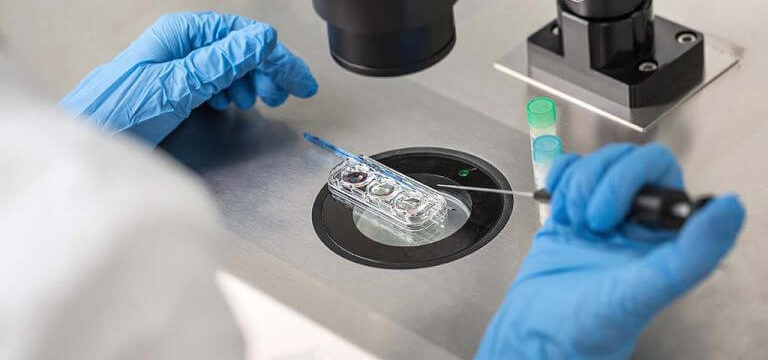
INFERTILITY TREATMENT
Ovulation Induction
This approach is used for women who have irregular menstrual cycles or are not ovulating. Usually, this is done in conjunction with the injection of sperm into the female reproductive tract to facilitate fertilisation. This method is recommended for mild cases of endometriosis, male factor infertility or when causes of infertility are unexplained. Success rates for this method result from ovulation induction which causes 3-4 eggs to develop instead of the usual 1-2 in a natural cycle. The risk of multiple pregnancies rises significantly if more than 3-4 eggs develop. There are different methods of ovulation induction using different types of drugs. If a woman menstruates every 22-32 days, then it is almost sure that she is ovulating regularly, thus preventing ovulation monitoring.
Artificial Insemination (IUI)
This is the method where sperm is delivered to the uterus rather than by sexual intercourse. Sperm can be injected directly into the cervix without washing or washed to separate the motile sperm and placed in the uterus. The semen consists mainly of prostatic secretions, and only 10% of ejaculate are sperm cells. Sperm washing separates the cells from the semen, which contain prostaglandins that can cause severe uterine contractions. Intrauterine insemination is preferred for subfertile males, but research contends IUI is ineffective by itself and must be used in addition to ovulation induction where at least 3-4 eggs develop. Intrauterine insemination is most commonly used when infertility is attributed to a factor in the male, unexplained, or cervical problems interfering with pregnancy.
Tubal Microsurgery
In cases where the fallopian tubes are blocked, surgery performed to unblock the tubes on peritubular adhesions requires excellent sensitivity to prevent new adhesions or occlusions. In some instances, the damaged parts of the tubes are excised, and functioning ends are sewn back together. Before 1980, tubal surgery was the only option for patients with tubal infertility. Since that time, IVF has become more successful, and surgery is performed much less frequently. Surgery to open the Fallopian tubes is most commonly performed on patients who have had a tubal ligation done to prevent pregnancy.In Vitro Fertilization (IVF) with IVF, a method of assisted reproduction, a man’s sperm and the woman’s egg are combined in a laboratory dish, where fertilisation occurs. The first test-tube baby was born in England in 1978. Assisted Reproductive Technology (ART) has constantly been developing. It is currently implemented for infertility resulting from blocked tubes, adhesions around the uterus and ovaries, endometriosis, malefactors, problems with the immune system and unexplained factors. Initially, one or two eggs that develop in a natural cycle were removed with laparoscopy from the ovaries. With the aid of drugs that can make it possible for the woman to produce 8-9 eggs, the success rates have gone up markedly.
Intracytoplasmic Sperm Injection – ICSI - Microinjection
Held by a single sperm under the microscope, special glass needles, to be injected into the cytoplasm of the egg technique. English phrase refers to intracytoplasmic sperm injection. With this method, the first pregnancy was obtained in 1992 and has revolutionised the male factor infertility.
